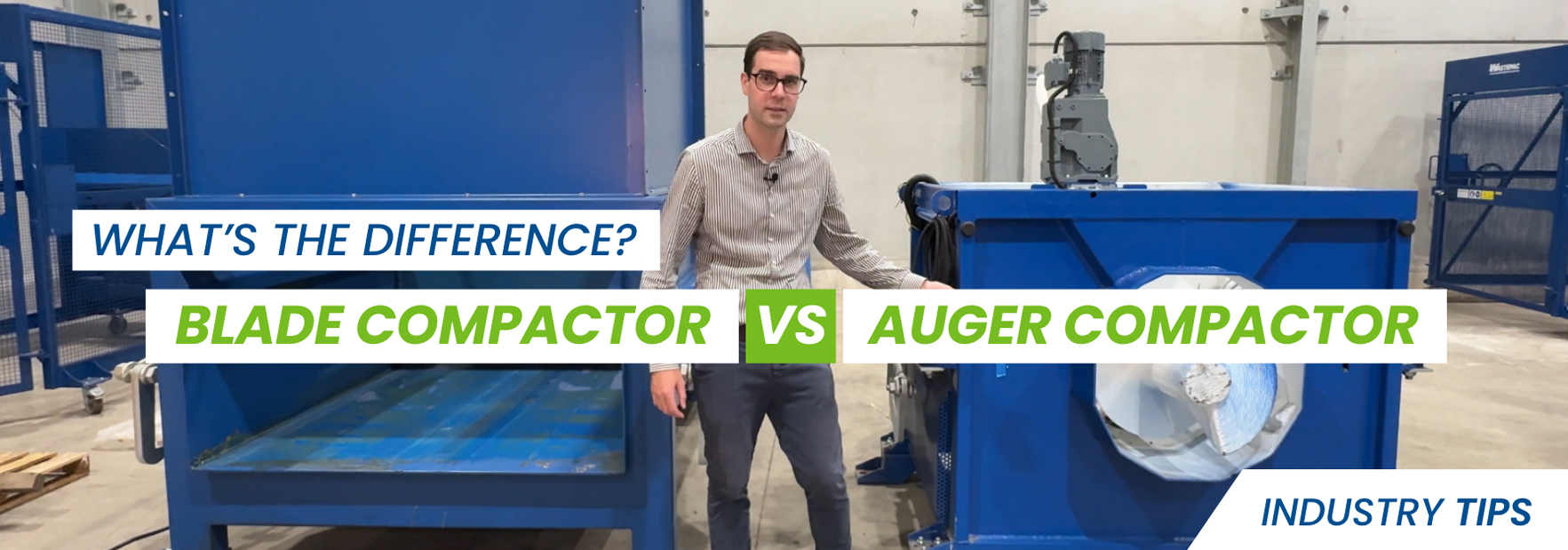What is the difference between Blade Compactors and Auger Compactors?
In the waste management industry, efficiency is key. Whether you’re operating a landfill, transfer station, or recycling facility, the ability to compact waste effectively can significantly impact operational costs and environmental sustainability. Two common types of compactors used in the industry are blade compactors and auger compactors, each with its own set of advantages and applications.
Blade Compactors: Power in Precision
Blade compactors are renowned for their precision and versatility. They use a large, flat blade or platen that moves back and forth, exerting pressure on the waste material to compact it efficiently. This mechanism is particularly effective for compressing bulky waste items and materials with low moisture content. Its wide opening avoids bridging and tangling of large items and soft plastics.
Blade compactors have a significant advantage in that they can achieve high compaction ratios on large items, which reduces the volume of waste and maximizes space utilization. This, in turn, helps to reduce transportation costs and increase landfill capacity, thereby contributing to overall cost savings and environmental sustainability.
Auger Compactors: Conquering Wet Waste Challenges and High Compaction on Cardboard
On the other hand, Auger compactors offer a unique solution for handling wet or sticky waste materials. These compactors utilise a rotating screw-like auger, which feeds waste material into a compactor bin where it is compressed. The auger’s design effectively breaks up and processes wet or sticky waste, enabling efficient compaction without clogging or jamming.
One of the key advantages of auger compactors is their ability to handle a wide range of waste materials, including food waste, cardboard, and other recyclables with varying moisture content. This versatility makes them invaluable in facilities where diverse waste streams are processed.
Additionally, auger compactors are known for their high compaction efficiency, often achieving greater compaction ratios compared to other compaction methods. This makes them ideal for limited space applications, such as in urban areas or densely populated regions.
Moreover, auger compactors excel in continuous compaction operations, making them suitable for high-volume waste processing facilities. Their robust design and reliable performance ensure consistent high-density compaction over extended periods, minimising downtime and optimising operational efficiency.
Choosing the Right Compactor for Your Needs
When it comes to selecting the right compactor for your waste management operations, careful consideration of your specific requirements is essential. Blade compactors are ideal for compacting bulky and dry waste materials, offering precision and high compaction ratios. On the other hand, auger compactors excel in handling wet and dry waste, providing efficient compaction and versatility.
Waste management professionals can make informed decisions to optimise their compaction processes by understanding the unique capabilities of blade compactors and auger compactors. Whether it’s maximising space utilisation, minimising transportation costs, or enhancing operational efficiency, choosing the right compactor is crucial for achieving sustainable waste management practices.
Visit our compactors page to explore your options further, or contact our Equipment Specialists to find out how we can help you.

